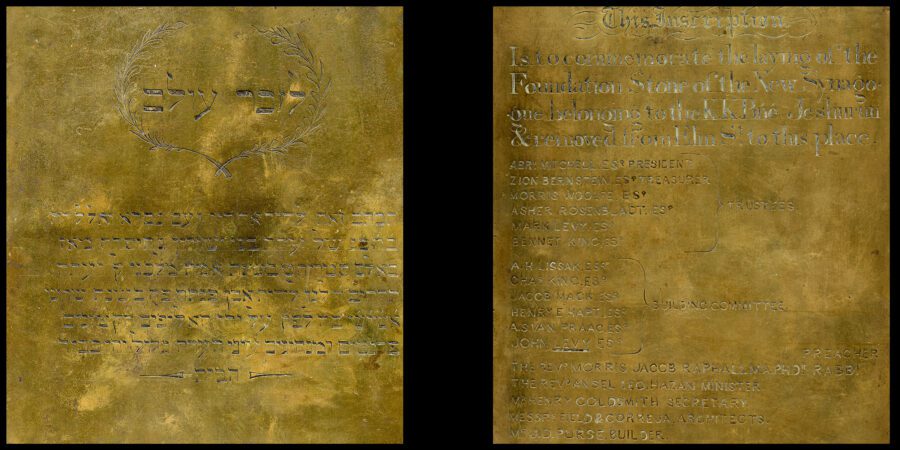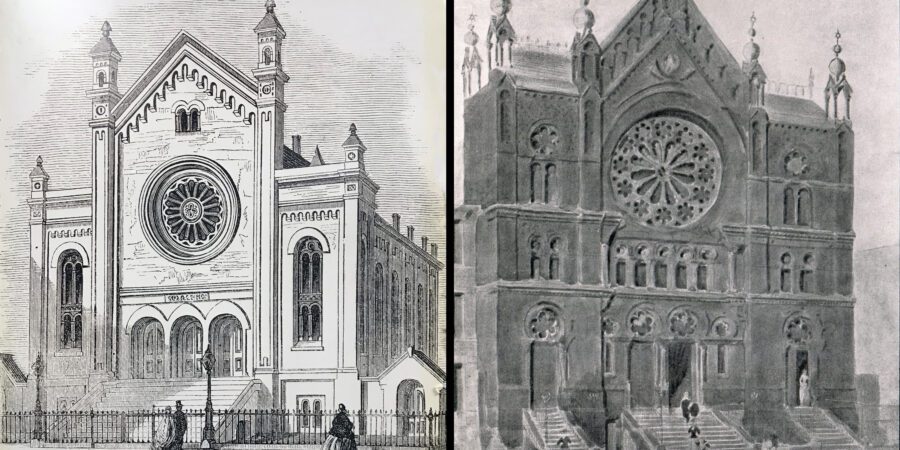
June 1, 1856: Moving On Up!
Fast Facts
-
Throughout the nineteenth century, as Manhattan’s population grew it moved northward—as did the synagogue.
-
The majority of BJ’s congregants were German Jews, many of whom had become successful, wealthier businessmen.
-
BJ was among the most prominent synagogues in the city.
In 1850, the population of New York City, the largest city in the country, was 515,000. By 1860, it was 813,000, an increase of 58%. In the same period, the Jewish population of the city is estimated to have risen from 16,000 to between 40,000 and 50,000, an increase of up to 200%, with the majority of immigrants coming from German lands.
From the time of the first Dutch settlers, Manhattan’s population had expanded by moving northward. When the Elm Street synagogue was acquired in 1826, with a seating capacity of 600, it was thought large enough to handle congregational growth for an extended period. Within 25 years, however, the congregation had outgrown the space and also found that the majority of its congregants had moved further north and were no longer in comfortable walking distance. Property on Greene Street was acquired, and a synagogue was built in the then-popular Gothic style. This synagogue was in use for fewer than 10 years before the same two factors—population growth and northward expansion—made the Greene Street synagogue obsolete, and B’nai Jeshurun acquired land for a synagogue on 34th Street. The newly built synagogue opened for services on September 14, 1865.

This inscription is to be an eternal remembrance of the last generation, and the created nation shall praise God. The synagogue of Congregation B’nai Jeshurun was established there, 9 Elm Street, in the year 5587. And now, God has expanded our privilege to affix this cornerstone here in the year 5611 at the behest of the notables, officers, supporters and leaders, the “eyes of the community.” May the honor of this house be great.
The members of the congregation also became wealthier during this period. When B’nai Jeshurun had first split from its parent synagogue, Shearith Israel, in 1825, the newly formed congregation was considered the poorer relation. Many of Shearith Israel’s early Sephardic families were already established and prominent merchants and traders, whereas many of the newer German Ashkenazic immigrants were poor, often starting out as peddlers. But many of these German immigrants were also well educated and familiar with both the innovations of Reform Judaism and secular society. While there were always a substantial number of poor Jews, there were also many individuals who became successful in businesses—from trading on Wall Street to selling secondhand clothing on the Lower East Side—in a relatively short period of time. They helped found communal societies that were not dependent upon religious observance and, for the first time in New York City, provided alternatives for social gatherings outside the provenance of the synagogue.

Right: The Romanesque 34th Street Synagogue (1865–1884)
By the mid-nineteenth century, many influential German Jewish families helped to place B’nai Jeshurun among the most prominent synagogues in the city. As these families became more integrated into American society, they also promoted a greater emphasis on dignity, order, and beauty. The actions of Trustees and the installation of a British rabbi helped move proper decorum to the fore at B’nai Jeshurun, although not always successfully.
Source
Israel Goldstein, A Century of Judaism in New York: B’nai Jeshurun 1825–1925
BJ: The First 100 Years: 1825–1925
This essay was first published in an exhibition as part of BJ’s bicentennial celebrations.
Discover moments that defined BJ’s initial century: political protests, educational innovations, impassioned membership debates, and architectural milestones.

